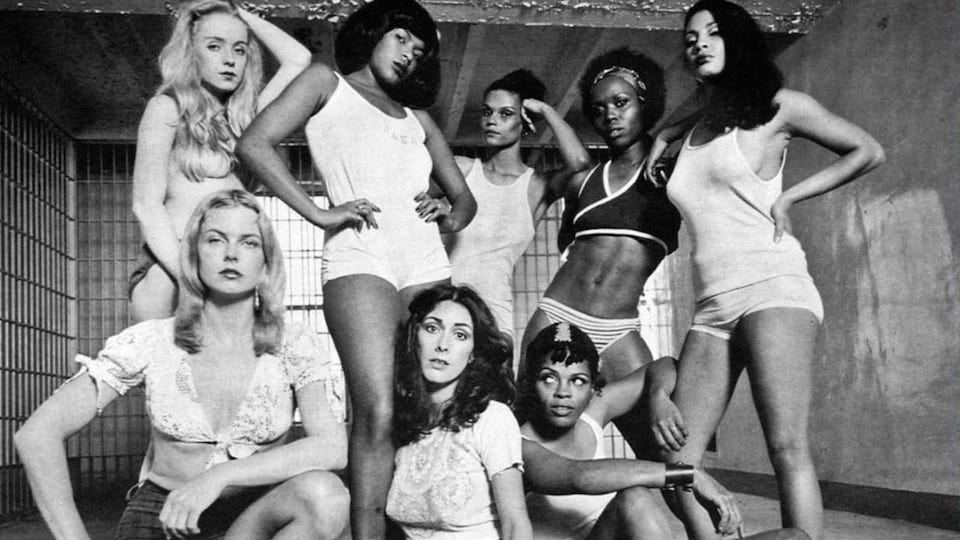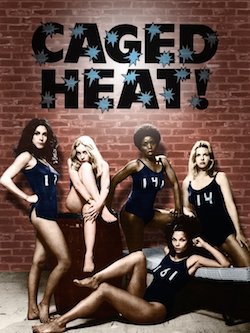
Caged Heat (USA, 1974) 83 min color DIR-SCR: Jonathan Demme. PROD: Evelyn Purcell. MUSIC: John Cale. DOP: Tak Fujimoto. CAST: Juanita Brown, Roberta Collins, Erica Gavin, Cheryl “Rainbeaux” Smith, Barbara Steele. (New World Pictures)

After earning his stripes writing and producing various exploitation fare, Jonathan Demme would finally get his big ticket to direct in this cult favourite, which is primarily the last word in the women’s prison genre. It at least has the rare distinction of being set in America instead of some banana republic. At once a spoof of the genre and a fascinating allegory, this inventive flick is also a “who’s who” of 1970’s B-girls: Juanita Brown, Roberta Collins, Erica Gavin, and (of course) Rainbeaux Smith. Even more, you get Barbara Steele in the showy role of the prudish, wheelchair-bound warden!
In a novel twist, this picture is full of fantasy sequences, as the inmates dream of sexual liaisons. Even Steele’s character has private fantasies, as seen in the wild moment where she dances around in a top hat and cane! Everyone here is dreaming of escape: Steele’s chair is her own jail cell. One inmate is put in isolation after some lewd photos of her are found by the warden. Fellow inmate Belle (Collins) sneaks food to her, and in one instance is caught after a skirmish with another prisoner, and she in turn is set to be lobotomized for her deviant acts. This chain of events sets the escape plan in motion. There are not one but two brazen escapes. After breaking loose, some of the girls rob a bank, then get a prison van to break back into jail (!) and rescue the other girls who are being drugged and ravaged by the doctor.
While resistance to authority is hardly a new theme in these films, Caged Heat is more interesting for its Satanic portrait of America. The authoritarians who represent the all-American dream are truly repugnant people. This is a picture where the prisoners unapologetically fight authority on a grand scale, and win. Yes, this is an exploitation picture through and through, but it does not mask the social criticism underneath. Like many of New World’s biggest hits, this somehow straddles the line between exploitation and art, provoking as much thought and subtext as entertainment. While never much of an action director, especially when he began A pictures, Demme’s handling of the many chases, breakouts and shootouts is beautifully done, with much kinetic energy and terrific editing. With a cast of drive-in starlets to die for, it is understandable why this remains such a favourite for midnight movie fans.
Originally published in The Roger Corman Scrapbook, 2006
